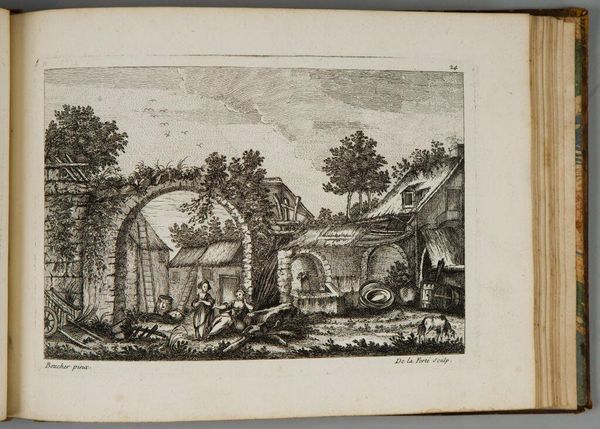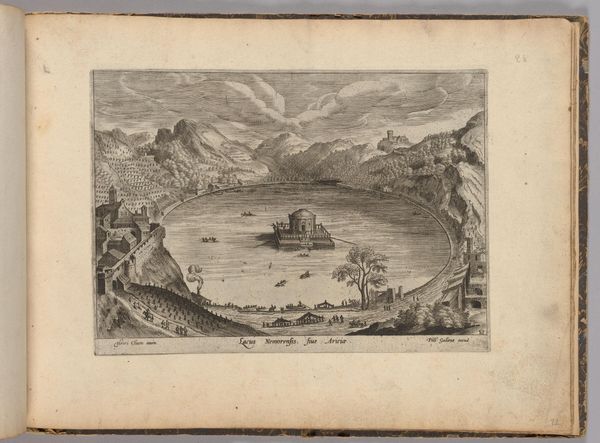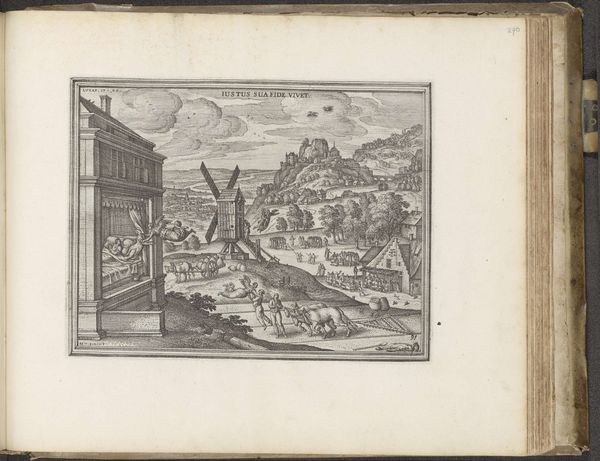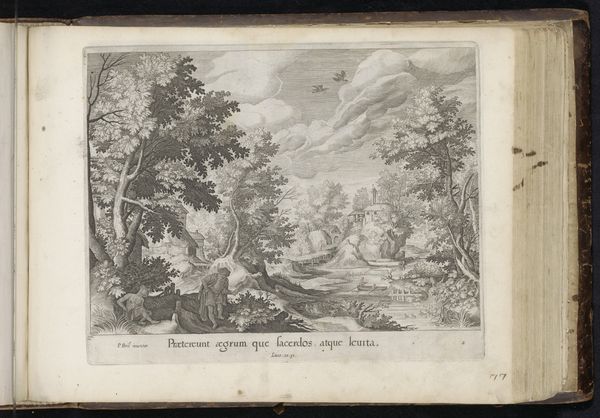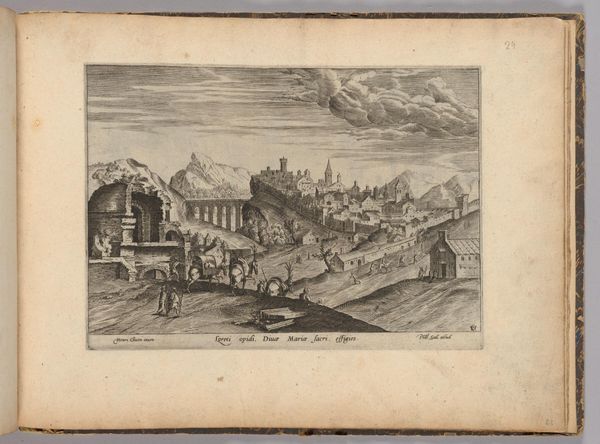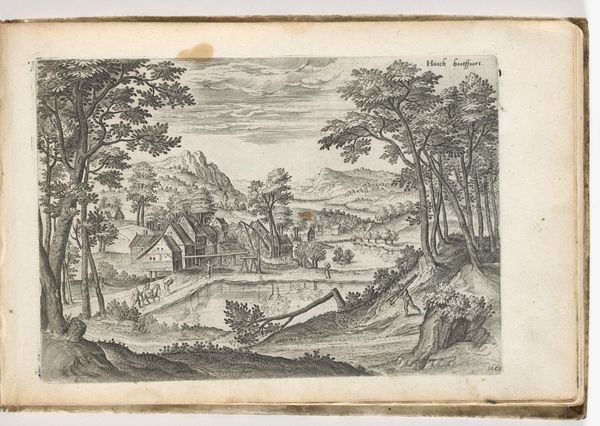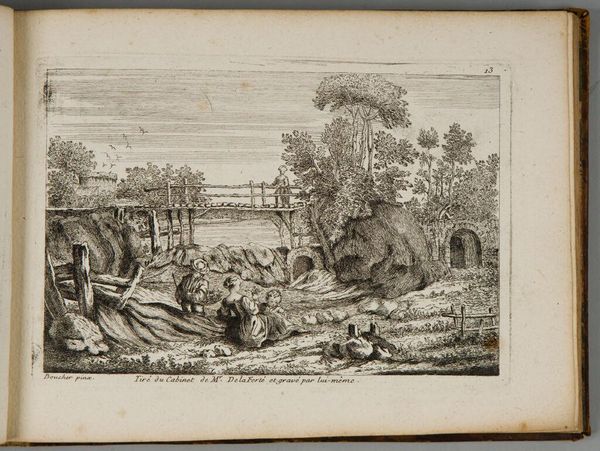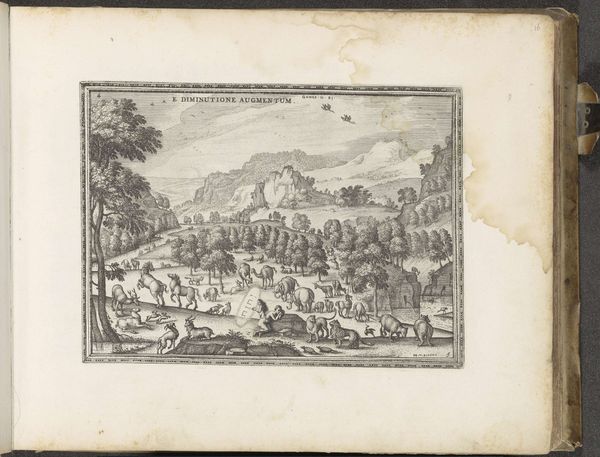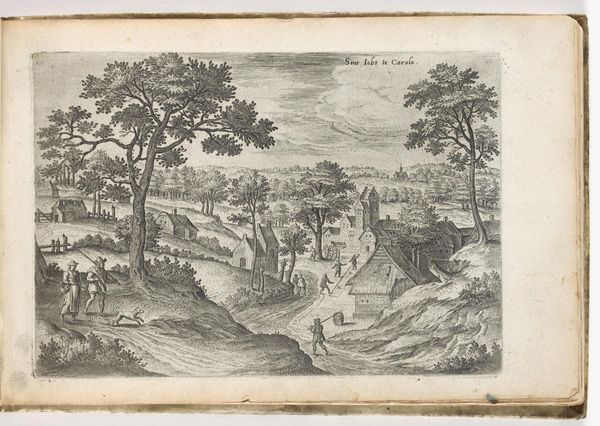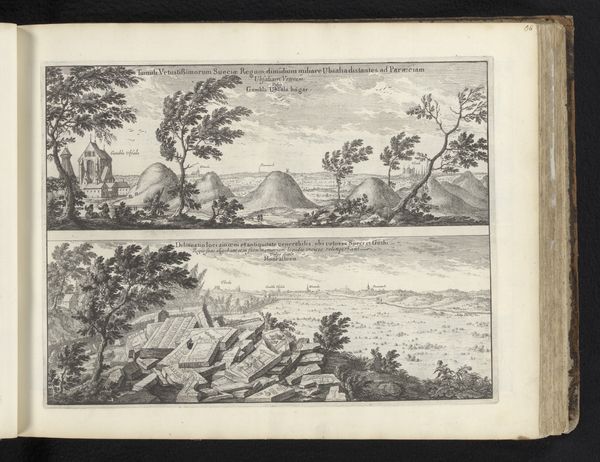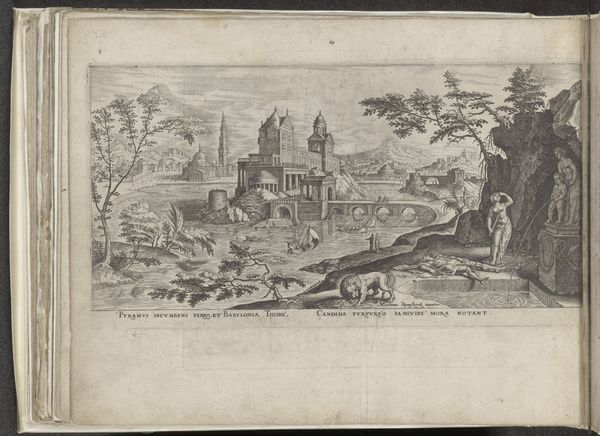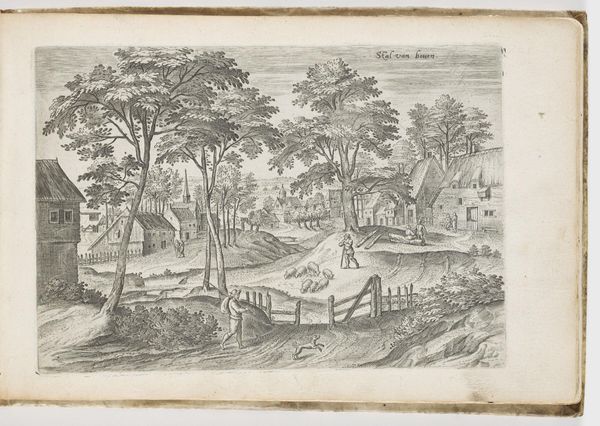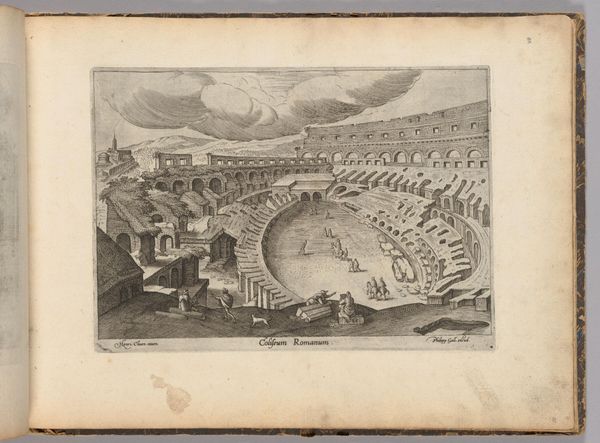
A Tuscan Bridge (Pontis effigies. In Tuscia uspiam) c. 16th century
0:00
0:00
Dimensions: plate: 17.4 x 24.4 cm (6 7/8 x 9 5/8 in.)
Copyright: CC0 1.0
Curator: Looking at this scene, it evokes a sense of quietude, almost pastoral calm. Editor: Indeed. This is an etching called "A Tuscan Bridge (Pontis effigies. In Tuscia uspiam)" by Hendrick van Cleve III, an artist active in the late 16th century. It is currently held at the Harvard Art Museums. Curator: What strikes me is the bridge itself. It dominates the composition, but it also feels somewhat fragile, almost like a gateway to another world. What role do you think bridges, both literally and symbolically, play in historical narratives of power and connection? Editor: That's a lovely question. Bridges have historically been vital infrastructural components that facilitate trade, migration, and cultural exchange. They also represent connection, transition, and the bridging of divides – both physical and metaphorical. Curator: It's interesting how the artist chose to frame it with the figures of everyday people and sheep. Editor: Perhaps van Cleve sought to emphasize the bridge's functional role within the Tuscan landscape and the lives of its inhabitants. The quiet detail of the landscape is also beautiful, I think, and invites us to consider our own journeys, both literal and metaphorical.
Comments
No comments
Be the first to comment and join the conversation on the ultimate creative platform.
